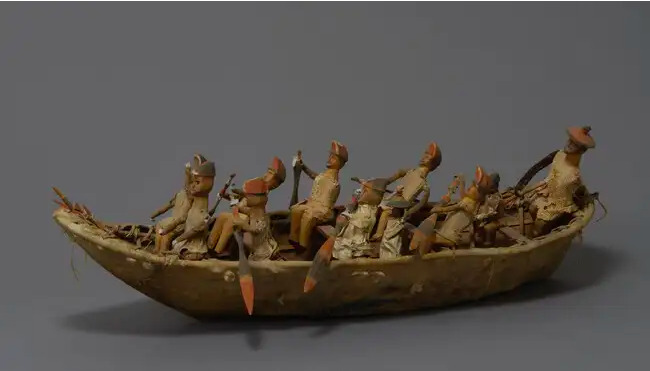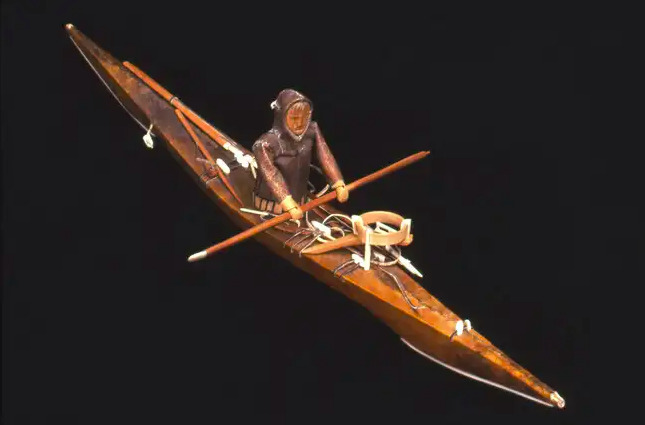Indigenous Ships
The Inuit people around Baffin Bay have long traveled and hunted in Baffin Bay. Their traditional ships, known as umiaks and kayaks, were essential for their survival and livelihoods in the harsh Arctic environments.
The umiak, a large open boat, was primarily used for transporting people and cargo. It was constructed using a wooden frame covered with animal skins (usually sealskins) which were stitched together with sinew. Umiaks were spacious enough to carry several people, hunting gear, and supplies. They were propelled by paddling or rowing and were particularly useful for longer journeys, communal hunting, and moving families and their belongings.
The kayak, on the other hand, was a smaller, one-person hunting boat designed for agility and maneuverability. Kayaks were typically built using a wooden frame covered with stretched animal skins, and they featured a small opening at the top where the hunter could sit. This design allowed for efficient hunting of prey as the kayak could be easily maneuvered through the icy waters. The kayaker would use a double-bladed paddle and a harpoon to hunt.
Both umiaks and kayaks were customized and adapted to suit the specific needs of the Inuit communities living in different regions, from eastern Siberia to the western coast of Greenland. Some were even decorated with tribal designs and symbols to ensure hunters' safety. They were vital tools for transportation, hunting, and gathering resources from the sea. These traditional ships played a significant role in the Inuit way of life, enabling them to navigate the challenging Arctic waters and sustain their communities through hunting and trade.



